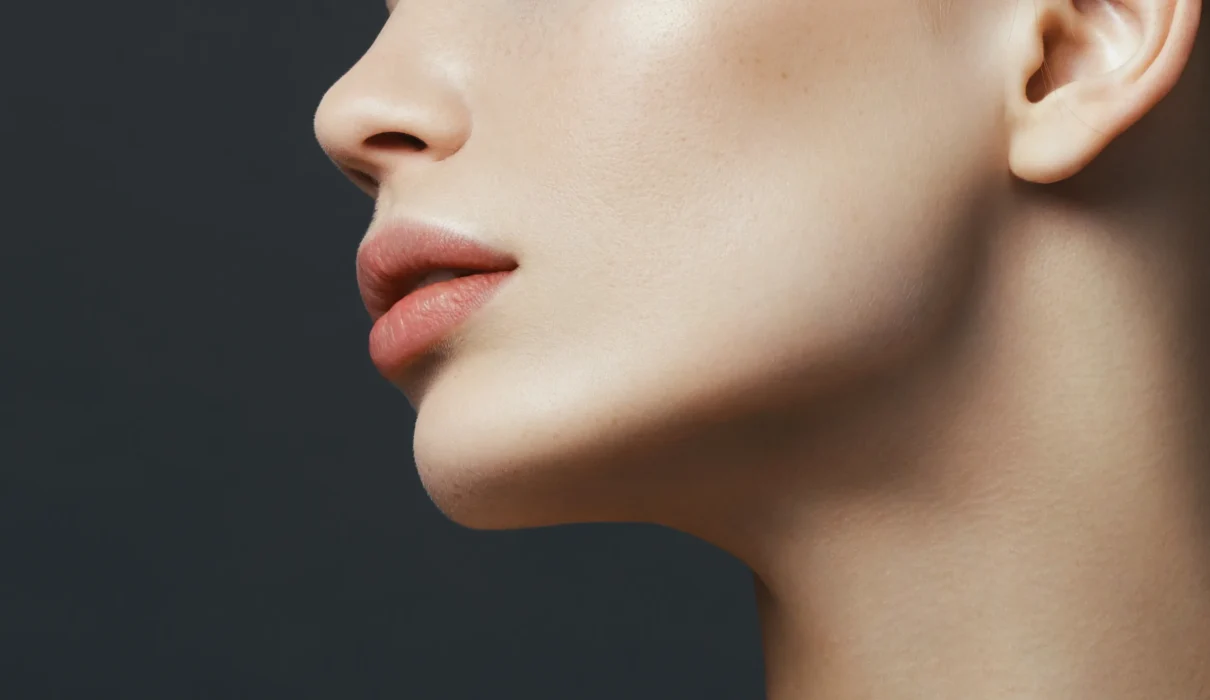
Is a harmonious and balanced face your dream? Is chin augmentation surgery necessary for a more beautiful and feminine appearance? In this article, we will discuss chin augmentation surgery in general terms within the scope of FFS.
What is a Chin Augmentation Implant?
A chin augmentation implant, also known as genioplasty or orthognathic surgery, is a method used to harmonize the jawline of the face to the face. It aims to improve the size and shape of the jaw using implants. These implants, which are used in various surgical procedures within the scope of FFS, are obtained from biocompatible materials such as silicone or porous polyethylene, which are safe and suitable for long-term use in the body.
After the procedure, the chin area is expected to be balanced with other facial features such as the nose and jawline. Thanks to chin augmentation, the incompatible and disproportionate appearance of the face is eliminated and a much more aesthetic and prominent jaw line is obtained.
The procedure is individualized to each person and surgeons choose the right implant size and shape for the best results. During surgery, incisions are usually made inside the mouth or under the chin, ensuring minimal scarring.
In Which Cases Should You Get a Chin Augmentation Implant?
Chin implant is a surgical procedure that is performed for both functional and cosmetic reasons and gives the best results. It is especially preferred in cases where a weak and inverted jaw structure damages the overall harmony and proportion of the face. At the point where the perception of beauty has come, beautiful jaw structure is associated with power and attractiveness. Implants are extremely convenient tools for a beautiful and face-compatible chin. Some people may prefer chin augmentation when they realize that their chin is not well aligned with their nose or jawline and to make their facial profile more aesthetic.
They also benefit from this procedure to get rid of the asymmetrical appearance caused by genetic factors, trauma or aging. Much better results are obtained by applying it together with procedures for the areas related to the jaw line, especially rhinoplasty. In addition, chin augmentation can have much more functional benefits, such as improving bite alignment in certain situations.
Are You a Good Candidate for Chin Augmentation Implants?
The first thing to consider about whether you are a good candidate for chin implants is your general state of health. If you are in good health after your surgeon’s assessment and you have a realistic expectation of the results; congratulations you are a good candidate! You can also benefit from this surgery if you think your face needs a chin implant. Anyone who wants to improve their facial profile and achieve better symmetry is a good candidate. Generally, people who are over the age of 18 and have completed facial development are considered suitable for this surgery.
How Is Chin Augmentation Surgery Performed?
Chin augmentation surgery using implants is usually performed under local or general anesthesia if the surgeon deems it appropriate. The procedure usually starts by making incisions through the mouth (intraoral approach) or under the chin (submental approach). The surgeon then safely and carefully places the implant in the area created in the jawbone.
The implant is carefully positioned to harmonize with the facial structure. The incisions are then carefully sutured by the surgeon. The procedure usually takes about 1-2 hours and is usually discharged the same day. It is necessary to follow the surgeon’s instructions to ensure the best results and healing after surgery.
What Is The Healing Process of Chin Augmentation Surgery?
Chin implants will start to heal in the first weeks. During this time, swelling, bruising and mild discomfort may occur. If the healing process proceeds normally, many people can return to their normal routines in the first week. However, heavy and strenuous exercises and activities should be avoided in the first weeks.
The healing process for chin augmentation progresses under the control of individuals. Most people may feel some discomfort for the first few days.
Swelling and bruising may commonly occur in the first days of recovery. However, these conditions are usually short-lived. Initially, it is recommended to consume liquid and soft foods to avoid pressure on the jaw area from chewing. During this period, it is important to stay in contact with your surgeon and not neglect follow-up appointments. Open communication, patience and realistic expectations are very important to get through the process in the best way.
Follow our blog for more. You can also reach us on our contact page for any questions you may have. Ffs center is an LGBT community friendly organization.


